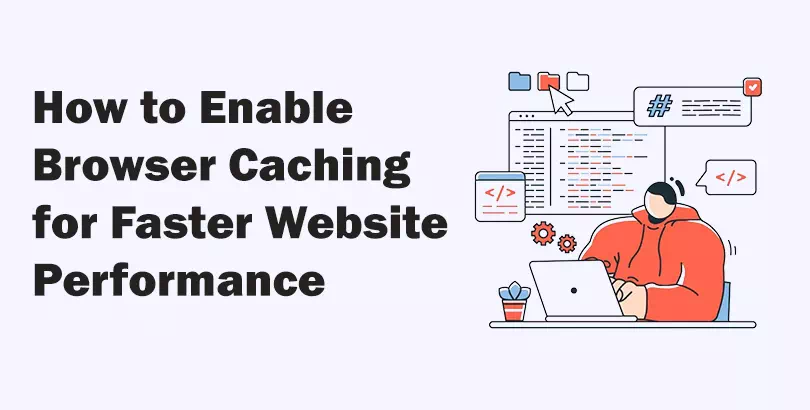Are you getting a warning or error of Enable Browser Caching which showing in Google Page Insights and GT matrix? This is a good sign of learning new things and adding a new skill to your website development career.
In this article, you will learn how to enable browser caching for Faster Website Performance and boost your SEO ranking.
What is Browser Caching?
Browser caching is a technique that stores static website files, such as images, CSS, and JavaScript, on a visitor’s local device. When the user revisits the site, the browser loads these files from local storage rather than downloading them again from the server. This significantly improves page speed and reduces server load.
Why is Browser Caching Important for SEO?
- Faster Load Times – A quick-loading website improves user experience, reducing bounce rates.
- Better Search Engine Ranking – Google considers page speed a ranking factor, so a faster website can lead to higher search visibility.
- Reduced Server Load – Less bandwidth consumption results in a more efficient server and lower hosting costs.
- Improved User Retention – Faster websites encourage users to stay longer and browse more pages.
How to Enable Browser Caching?
1. Using .htaccess (for Apache Servers)
If your website runs on an Apache server, you can enable browser caching by modifying the .htaccess file. Add the following code:
<IfModule mod_expires.c>
ExpiresActive On
ExpiresDefault "access plus 1 seconds"
ExpiresByType text/html "access plus 1 seconds"
ExpiresByType image/x-icon "access plus 2592000 seconds"
ExpiresByType image/gif "access plus 2592000 seconds"
ExpiresByType image/jpeg "access plus 2592000 seconds"
ExpiresByType image/jpg "access plus 2592000 seconds"
ExpiresByType video/mp4 "access plus 2592000 seconds"
ExpiresByType image/png "access plus 2592000 seconds"
ExpiresByType image/webp "access plus 2592000 seconds"
ExpiresByType text/css "access plus 604800 seconds"
ExpiresByType font/woff "access plus 604800 seconds"
ExpiresByType font/woff2 "access plus 604800 seconds"
ExpiresByType font/ttf "access plus 604800 seconds"
ExpiresByType text/javascript "access plus 86400 seconds"
ExpiresByType application/x-javascript "access plus 86400 seconds"
</IfModule>
This sets different expiration times for various file types, allowing browsers to store them for future visits.
2. Configuring Cache-Control Headers
Another method is to set cache-control headers in your .htaccess file:
<FilesMatch "\.(gif|jpeg|jpg|svg|png|ico|css|js|swf|webp|woff|woff2)$">
Header set Cache-Control: "max-age=31536000, public"
</FilesMatch>
This tells the browser to cache static resources for one year.
3. Browser Caching in Nginx
If your server uses Nginx, add the following directive to your configuration file:
location ~* \.(jpg|jpeg|png|gif|css|js|woff|woff2|ttf|webp|svg)$ {
expires 1y;
add_header Cache-Control "public, max-age=31536000, immutable";
}
This ensures static files are cached efficiently.
4. Leveraging WordPress Plugins
If you’re using WordPress, you can enable browser caching with plugins such as:
- WP Rocket – Offers easy caching configuration.
- W3 Total Cache – Allows browser caching and minification.
- WP Super Cache – Generates static HTML files for faster delivery.
5. Setting Caching Policies in CDN (Content Delivery Network)
A CDN stores copies of your website on multiple servers worldwide. Popular CDNs like Cloudflare, KeyCDN, and Akamai offer caching settings that can be configured for optimal performance.
Testing Browser Caching
To check if caching is working, use:
- Google PageSpeed Insights – Provides caching recommendations.
- GTmetrix – Analyzes caching settings.
- WebPageTest – Displays detailed cache behavior.
Conclusion
Enabling browser caching is a simple yet powerful way to enhance website performance, user experience, and SEO rankings. By configuring caching settings on your server, using WordPress plugins, and leveraging CDNs, you can significantly reduce load times and improve your site’s efficiency.
By implementing these strategies, your website will not only be faster but also rank better in search engines, leading to higher traffic and engagement.

